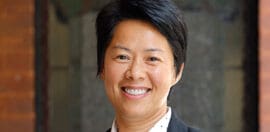Cross Sector Alliance Forms To End Digital Divide

3 August 2017 at 8:25 am
More than 100 organisations from civil society, business, media and technology have joined forces to reduce the number of Australians being left behind in the digital age.
In light of the latest Australian Digital Inclusion Index which found up to three million Australians were not online, leading organisations across of Australia pledged their commitment on Thursday to closing the digital divide gap.
The index released on Tuesday found people with low levels of income, education and employment, along with older Australians, people with disability, remote Indigenous communities and people in regional areas are more likely to be digitally excluded.
Established by not-for-profit Infoxchange and supported by Australia Post, Google and Telstra the Australian Digital Inclusion Alliance (ADIA) said it aimed to accelerate collective action in critical areas including affordability, digital ability and accessibility.
David Spriggs, CEO of Infoxchange and Chair of the ADIA, said digital exclusion had negative implications for people across all facets of life.
“Currently 90 per cent of jobs are advertised online. However, 43 per cent of households with an annual income of $40 000 or less do not have a home internet connection and 23 per cent do not access the internet at all. In the rush to digitisation, being left behind in the digital world will only compound disadvantage,” Spriggs said.
In a joint statement the alliance said: “At its heart, digital inclusion is about social and economic participation: using online and mobile technologies to improve skills, enhance quality of life, educate and promote well being across the whole of society.”
Spriggs said the ADIA believes digital inclusion needs to be better addressed in public policy and innovative approaches need to be shared.
“The ADIA seeks to harness the collective skills, knowledge and capabilities of organisations across the country to reduce the digital divide and enable greater social and economic participation for all Australians.
“Unless we work together with a strategic approach we won’t succeed in achieving an Australia where everyone can participate in the digital world.
The social sector is also joining forces with government, business and technology to tackle digital exclusion.
“There are three million people living in poverty in Australia, 730,000 of which are children. There are also three million people digitally excluded from Australian life. It would be fairly safe to say there is some cross over here, and that giving a necessary hand up and reducing the number of people living in poverty will assist in increasing the accessibility of people to the digital world,” ACOSS CEO Cassandra Goldie said.
The Smith Family CEO Lisa O’Brien said addressing the digital divide required a complex, systematic approach from all sectors.
“Thousands of Australian children in our most disadvantaged communities do not have access to the technology many of us consider essential in our day-to-day lives.
“There is a real risk the education gap for these children will increase if this “digital divide” is not well understood or systemically addressed.
“The gap doesn’t only relate to access to computers, tablets or phones, but also ability to afford broadband and a lack of digital skills support at home,” she said.
For more information on the ADIA click here.







